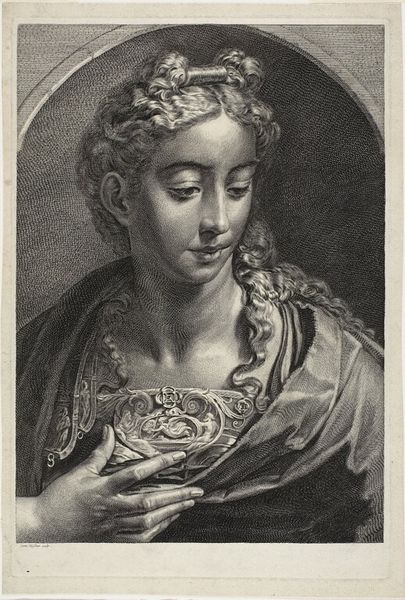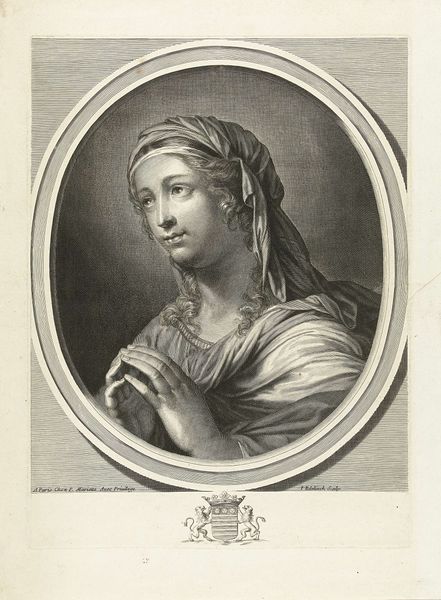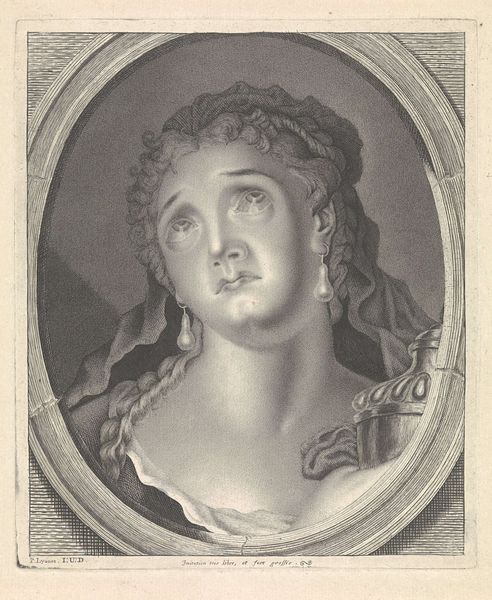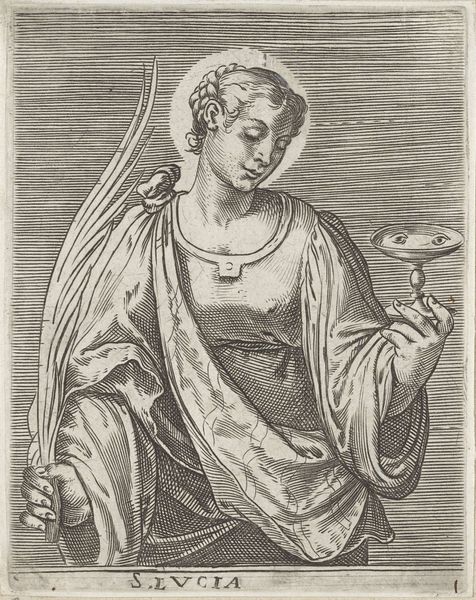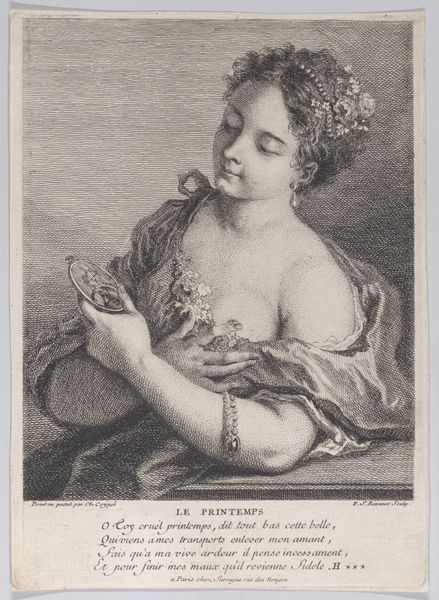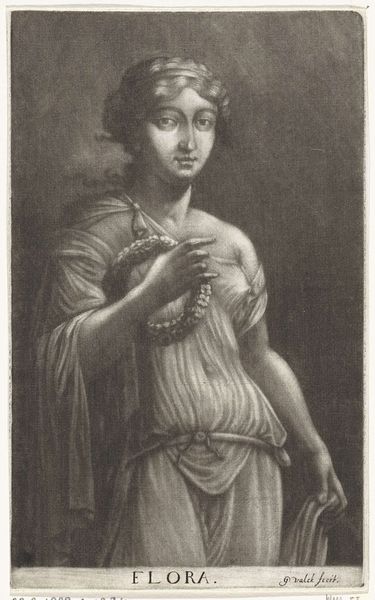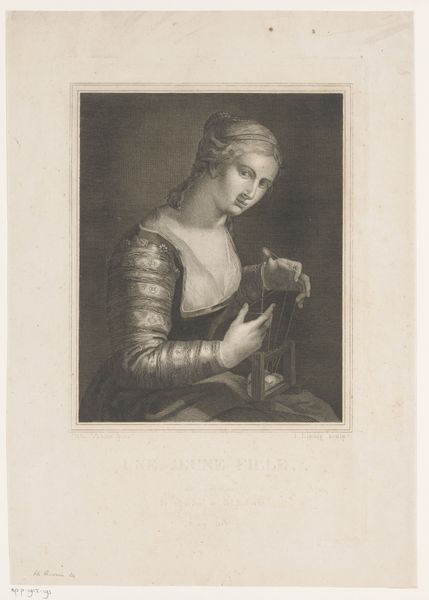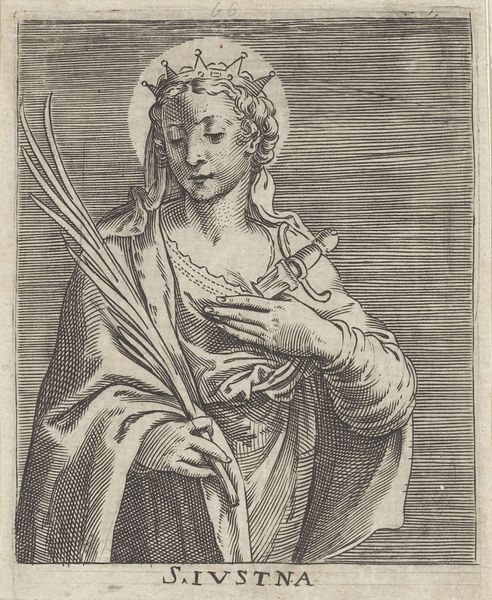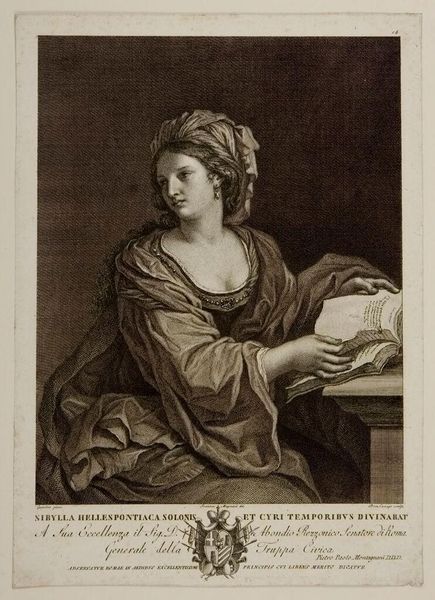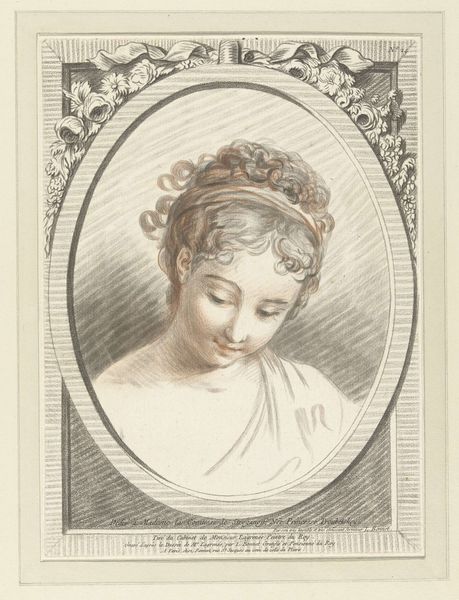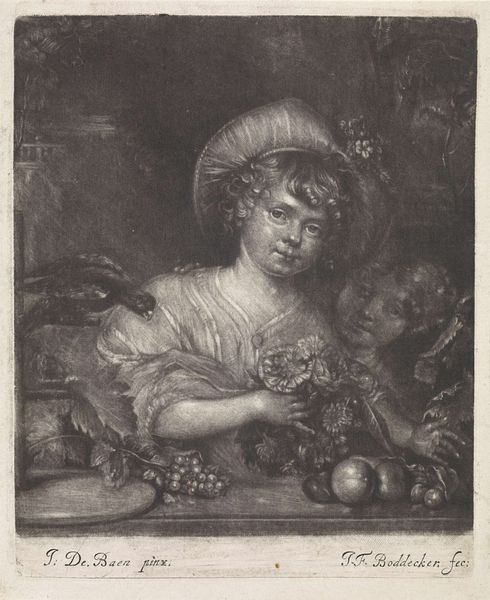
print, engraving
#
portrait
#
baroque
# print
#
charcoal drawing
#
figuration
#
pencil drawing
#
line
#
northern-renaissance
#
engraving
Dimensions: height 396 mm, width 265 mm
Copyright: Rijks Museum: Open Domain
Editor: So, here we have Cornelis Visscher’s "Minerva," an engraving, made sometime between 1638 and 1658. The delicate lines create such a serene, almost melancholic mood. What historical context should we consider when viewing this piece? Curator: Well, understanding the cultural position of Minerva, the Roman goddess of wisdom and strategic warfare, is crucial. In 17th-century Dutch society, representations of classical figures often served as allegories for civic virtues or intellectual ideals. How do you think this particular depiction of Minerva participates in those societal values? Editor: I suppose the gaze, cast downwards, and the gentle hands holding what seems like a sculptural relief suggest a contemplative nature, focusing on the wisdom aspect rather than warfare? Does that relate to the function of art in society at that time? Curator: Precisely. Consider that printmaking at this time facilitated the wider dissemination of images. Minerva, in this context, isn't just a deity but a model for learned behavior, particularly amongst the burgeoning merchant class keen to associate themselves with classical ideals. The print becomes an accessible emblem of cultivated taste and intellectual aspiration. Editor: That's fascinating. I never thought about prints serving that specific social function. So, displaying something like this in your home became a kind of… statement? Curator: Exactly. It's a statement about education, prosperity, and adherence to social norms, wrapped in the guise of classical mythology. And Visscher, as the printmaker, participates in the reinforcement of these values. Are there specific elements that strike you as particularly compelling? Editor: The intricate detail in the relief Minerva is holding; it’s a beautiful detail but difficult to really see. I’ll definitely be thinking differently about prints after this! Curator: Absolutely. It reflects not just artistic skill but the way prints engaged with the social fabric of the Dutch Golden Age.
Comments
No comments
Be the first to comment and join the conversation on the ultimate creative platform.
